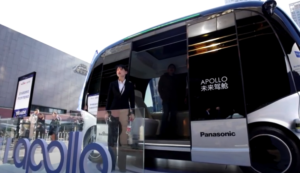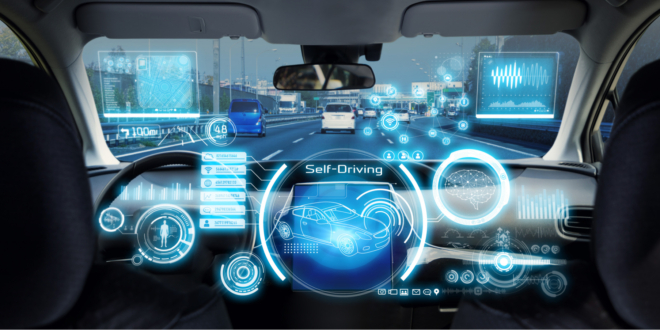By Jeff Domansky
At PaymentsNEXT, we’re usually focused on the payments industry, fintech, technology, payments trends, and new developments. Once in a while, it’s helpful to step back and think about the intersection of payments and technology in our daily lives and what’s on the horizon.

Take contactless payments, for example. No one could have predicted the pandemic and its impact on payments adoption. Digital payments lagged big-time in the US pre-pandemic, but no longer. Necessity is the mother of invention, and there’s been a lot of creativity and innovation going on.
That’s why reports of Chinese AI and internet giant Baidu’s driverless Beijing taxi service announcement caught my eye.
Just like Amazon, Google, and many other tech leaders exploring driverless technology for deliveries and transportation, Baidu is already in the marketplace with driverless taxis in the lead up to the 2022 Beijing Winter Olympics.
Who is Baidu?
If you’re not familiar, Baidu was originally a search engine called Rankdex, launched in 1996 by founder Robin Li. Li and Eric Xu founded Baidu in 2000, and it has grown into a powerhouse technology company with interests in search engines, mapping technology, cloud storage, artificial intelligence, and much more.
It’s the fourth-highest Alexa-ranked website behind Google, YouTube, and Facebook and is immediately followed by Wikipedia, Qq.com, Taobao, Tmall.com, Yahoo, and Amazon.

Think of a business where Google meets Amazon and connects with Apple, Amazon Web Services, YouTube, Wikipedia, Netflix, Uber, and Facebook. Imagine all the services interconnected within these global leaders. Baidu is right there, competing, if not leading, in every category from search engines, ad revenue, and video streaming to cloud services, AI, and autonomous vehicles in China.
Baidu spun off a portion of its financial services group to investors in 2018 for $1.9 billion. In addition, it exited the food delivery business selling to Ele.me and Alibaba, and in recent years has sharpened its focus as a technology company. Baidu is listed on NASDAQ (NASDAQ:BIDU), as is its majority-owned video streaming business iQiyi (NASDAQ:IQ).
How big is the autonomous vehicle marketplace?
When you think about the ride-hailing business, Uber comes to mind first. Although Baidu, like Google, has the majority of its business in search and advertising revenue, it’s leveraging its AI and technology experience into new areas of potential growth, including the driverless vehicle market.
While the autonomous vehicle market stalled 3% in 2020, Statista expects it to recover in 2021 and reach $37.2 billion by 2023.

According to a recent analysis by Motley Fool’s Leo Sun, “Baidu’s AI Cloud also serves as a firm foundation for its other cloud-based services, including its Apollo software platform, robotaxis, electric vehicles, and digital mapping services. Baidu said its revenue from its Intelligent Driving and OGI (other growth initiatives) division “grew rapidly” as its fledgling Apollo Self Driving platform expanded fivefold from a year ago.”
Sun pointed to CEO Robin Li’s recent conference call where he said Baidu’s “non-advertising revenue could possibly exceed advertising revenue within Baidu Core in the next three years.”
Wikipedia notes that Baidu has more than 7,000 Chinese patent publications, the most in the country. “The AI open platform Baidu Brain has made available more than 250 core AI capabilities to over 1.9 million developers, while PaddlePaddle, the largest open-source deep learning platform in China, services 84,000 enterprises. Industries throughout China are using the PaddlePaddle platform to create specialized applications for their sectors, from the automotive industry’s acceleration of autonomous vehicles to the health-care industry’s applications for fighting COVID-19.”
The table is set to understand why the investment in autonomous vehicles makes future business sense. As Sun says, “If Baidu’s revenue from these newer businesses eventually exceeds its advertising revenue, it could be better insulated from economic downturns and compete more effectively against Tencent and Alibaba.”
Autonomous taxis steering to the future
So, we’re back where we started, patiently waiting to call up one of Baidu’s driverless taxis now operating in Beijing.
Hailing a robotaxi in Beijing is easy. Open Baidu’s Apollo Go app. Identify your car using the virtual reality navigation and remote-controlled car horns like you would on your own vehicle’s key fob. Scan QR and health codes on the card to unlock it. Get in, pass safety protocols, confirm payment details, and press “Start your journey.”
The system makes sure your safety belt is on, doors are closed, and you’re on your way. It’s just that simple. Baidu says human operators are available at all times to provide remote 5G safety and emergency vehicle access.
But think about the complex layer of driverless technology, mapping, safety, healthtech, and fintech under the hood as you’re enjoying your ride.
The future is autonomous, intelligent, and coming fast along with fintech and a host of related technology. Don’t you love how easy it is to spend and pay for things these days and in the future?
If you want a more in-depth look at Baidu’s autonomous vehicle, industry partnerships, and technology strategies, check out this video.
Other related PaymentsNEXT posts:
Snapshot: Leaders in last-mile delivery
Amazon further disrupts the delivery world
Kroger launches AZ driverless delivery of groceries








LET’S CONNECT